How to Prune Blueberries: 12 Useful Tips & When to Do It
-
Pete Ortiz
- Last updated:

Blueberries are well known for their vigorous growth and bountiful fruiting. But as the blueberry bushes grow taller, the plants cease producing the fruit-yielding canes, and the yields consequently reduce. After the first several years, new flowers also stop forming because the plant focuses more on increasing the leaf surface area to cater to the entire plant’s respiratory needs.
That is why it is essential to prune your blueberries. Besides giving them an attractive shape, pruning helps your plants maintain strong vigor and productivity, as well as a range of other importance.
This article will list the guidelines to help you carry out the best pruning practice for your blueberries. We also explain the ideal time to prune and how often to do it.
Benefits of Pruning Blueberries
As introduced above, several reasons necessitate pruning blueberries. As a backyard farmer or gardener with a keen interest in blueberry farming, you obviously wouldn’t want to miss out on the following benefits:
- Pruning helps blueberries produce more flowers, therefore increasing yield production.
- Pruning is a cultural control measure for insects and diseases since it increases the airflow to the plant’s center.
- It also helps plants produce larger and higher-quality fruits.
- Pruning is essential for developing an appropriate growth habit for harvesting.
When to Prune Blueberries
Blueberries are often susceptible to winter injuries, whereby the canes and wood break. For this reason, it’s advisable to prune them when all the damaged plants become identifiable and ready to be removed. This period typically falls in early spring or late winter.
Also worth understanding is that fresh blueberry cuts are intolerant to extreme frost. Thus, it is safe to prune your plants immediately after the winter frost has passed. As much as it may hurt, ensure you cut out between 30%–50% of the fruiting wood, even if it includes canes with flower buds.
Whereas other growers start to prune immediately after the harvest season, doing so puts the plants at more risk of breaking during the winter and hinders their long-term productivity. The broken canes will also take longer to identify until the next harvest season.
The Different Types of Blueberries
While some blueberry hybrids are self-fertile, some types require you to plant more than one variety for cross-pollination in fruit formation. Some of the most common types of blueberries include low-bush, high-bush, half-high, rabbit-eye, and several other assorted hybrids.
Regardless of their types, all blueberry plants are pruned the same. Let’s take a quick look at the steps to follow for a successful pruning experience.
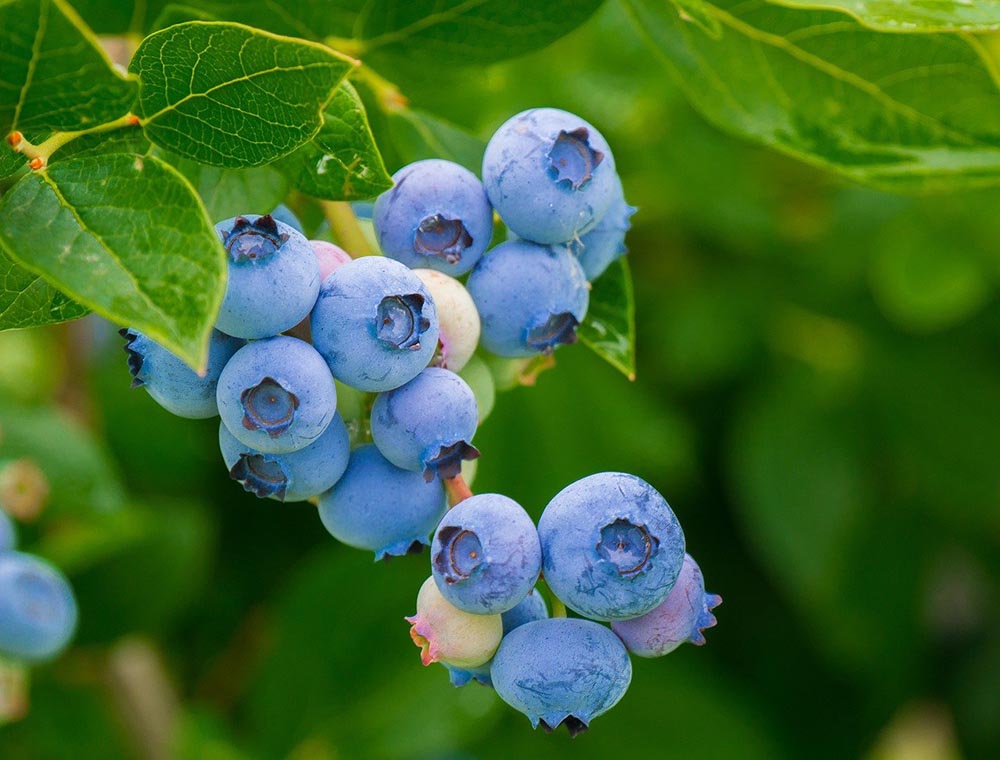
The 12 Tips for Pruning the Blueberries
1. Prepare Your Pruning Equipment
Even before you plunge into the actual pruning, there are a few things to remember. First, you need to sharpen your pruning equipment to razor-sharp levels. Whereas slightly blunt shears and secateurs can prune, you should be aware that they may tear the canes’ bark.
In addition, ensure you sterilize them before moving to the next bush to prevent spreading diseases from one plant to another. Rubbing alcohol always serves as a surefire way to keep your berries safe.
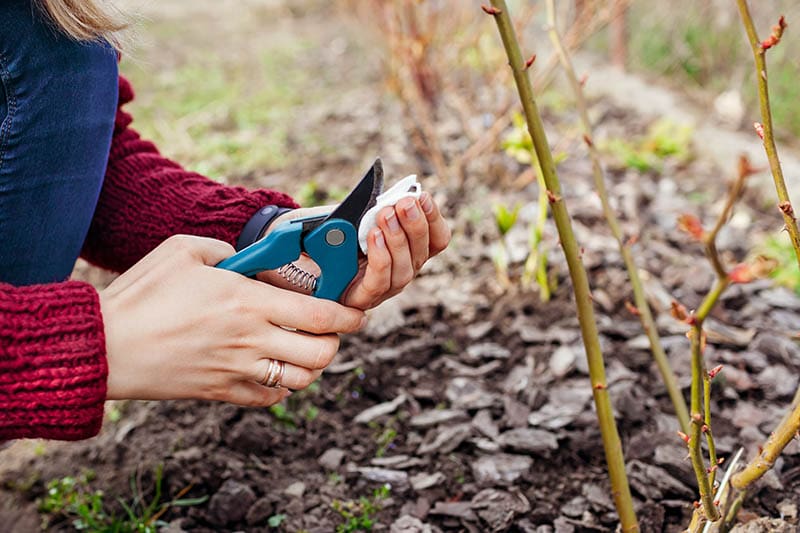
2. Identify the Fruit and Vegetable Buds
Take a close look at your blueberry plants and identify the two types of buds starting to form. You should notice larger buds that resemble teardrops and smaller, thorny ones that assume a triangular shape. Identifying them is crucial since they determine how you’ll prune your plants.
Whereas the larger buds grow into flowers that become fruits after pollination, the smaller buds become leaves and, later, fruitwoods. Take note of the number of larger buds on a specific branch. Typically, they will be just a few on older canes to signal that it’s time to cut off. Do not remove the canes with most buds since they produce the most fruits.
3. Cut Off Damaged Branches
When doing any pruning, removing any dead or damaged branches is advisable, and blueberries are no exception. Identify where they join the main branch and cut them off. Remember, you shouldn’t leave behind any stumps, as they may provide an entryway for disease-causing bacteria. Also, if the entire branch is damaged, ensure you cut it back to the ground to prevent the effect from spreading further.
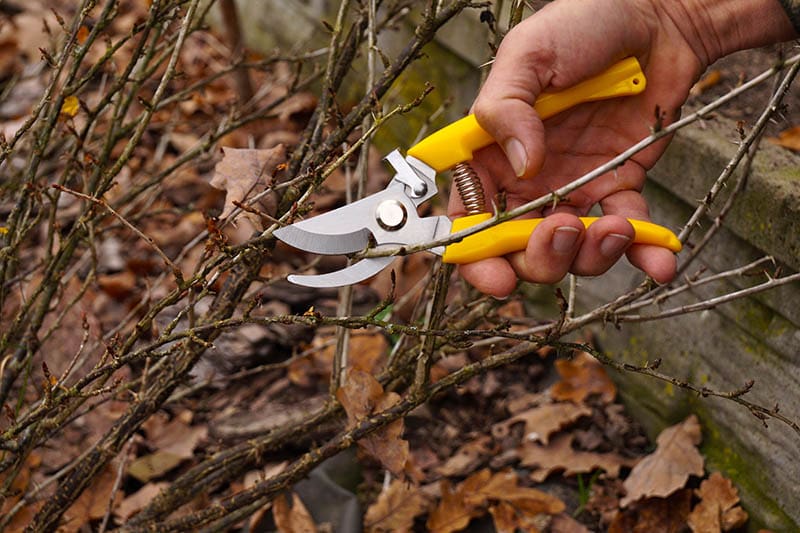
4. Remove Crossed Branches
After removing the damaged branches, your next step will be to remove the ones that rub against each other. Besides choking other parts of the plant, crossed branches make the structure of your blueberry bushes closed and ugly. Cut them off to the ground as well.
5. Pruning Young Blueberry Bushes
If you are pruning your blueberries for the first time or have had them properly pruned in the past, then you need to cut down ⅓ of the remaining branches. This means you should select the thickest and oldest branches and cut one out of every three to the ground. Doing this will encourage new canes to grow off the roots, giving your plants a fresh breath of life. Repeat this step every winter for increased fruit production.

6. Pruning Mature Blueberry Bushes
As mentioned earlier, blueberries fail to generate new branches after the first 7 or 8 years. If your plants are overgrown yet unpruned, it’s recommended that you cut down half of the branches to encourage the formation of new stems. Start with the thickest and oldest branches, as usual. By doing this, new canes will emerge from the roots, and the yield production will ultimately increase.
Also, over the next 2–3 years, you should remove the remaining older branches as the newer ones take their place. The crop’s productivity will increase as the bush slowly becomes rejuvenated.
More Tips for Pruning Blueberries
Proper pruning shouldn’t be a debate if you want to grow larger fruits and increase the plants’ long-term productivity. The following tips will help you carry out a better pruning exercise:
7. Prune Your Plants Annually
The essence of pruning is to replace old branches with new ones. In that case, it is essential to prune your blueberries once every year since it prolongs their productivity. Renewal pruning is also a cultural disease control measure. Identifying and removing damaged wood significantly reduces the chances of the disease spreading to the entire plant.
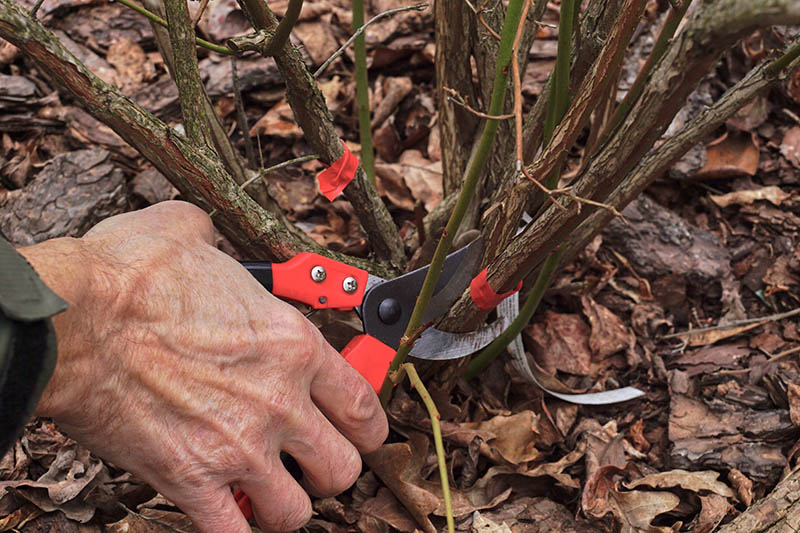
8. Avoid Shearing Back
Shearing back is a common mistake for most blueberry growers. Remember, the fruit-forming buds are located 2–3 inches toward the outermost part of the stem growth. If you shear too far back, you will remove all the flower buds. Consequently, no yield production will occur.
9. Focus on Increasing Airflow to the Plant’s Center
The plants become susceptible to pests and disease infection if your bushes are too thick. That is why pruning aims at creating a conducive environment for the plant. While creating a space for sufficient airflow, besides the damaged wood, consider cutting away weak shoots, branches that stick out to pavements, or the ones touching the ground.
10. Carry Out Post-Pruning Maintenance
A great deal of advice backs applying fertilizer around your plants after pruning. It helps kick-start the plant’s rejuvenation process and adjust soil pH after the new shave, considering that blueberries thrive in acidic soils. Suppose you aren’t knowledgeable about soil acidity; in that case, you should consult a soil expert to help identify the ideal fertilizer type to add.
Also, mulch the bushes with inch-deep shreds of hardwood bark, pine straw, grass, or leaves. Do not over-mulch, as blueberries have shallow roots that cannot tolerate being buried too much. If you decide to use compost manure or other non-commercial fertilizers, there’s no need for mulch.
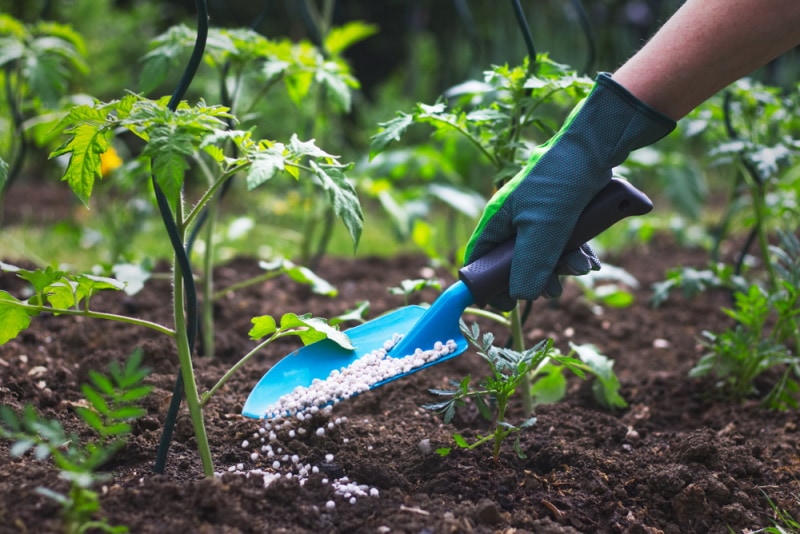
11. Do Not Add Used Coffee Grounds to Your Bushes
Contrary to popular opinion, you shouldn’t add coffee grounds directly to the soil around your bushes. The myth of acidifying soil using coffee grounds doesn’t actually work because the coffee-making process permanently removes most of the acid contained in the coffee beans. Although the resulting waste is often nitrogen-rich, it’s practical if used in compost piles rather than being added directly to the soil.
12. Prune at a 45-Degree Angle
Cutting them at a slanting shape, considerably at 45 degrees, is essential when doing the pruning. Slanted cuts help control the spread of rot caused by bacteria that settle on the cuts. You’ll find the tip of the slant is the only part that decays after pruning.
Final Thoughts
By pruning your blueberry bushes, you invest in their future productivity. Besides increasing yield production, it is a handy practice that helps control pests and disease infection while giving your plants good shape.
Pruning is more of an art than a science. It’s common to feel doubtful about pruning your blueberries but never forget there’s no specific process to follow—even the experts take different approaches. But overall, the guidelines outlined in this article should help you prune your bushes excellently. Ensure you also observe the tips for better results.
Featured Image Credit: vladdon, Shutterstock
Contents


